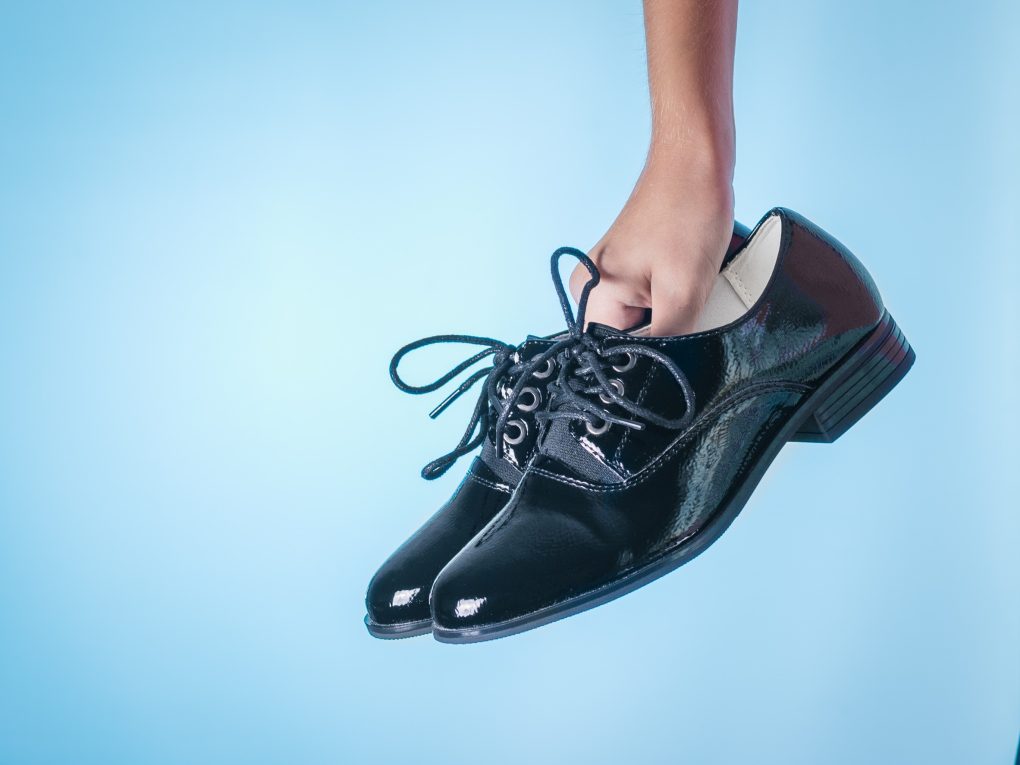When Shoes Are Too Small: Quick Guide to Know if Your Shoes Are Too Small
Shoes are too small when you start feeling pain. The shoe may also become unstable and difficult to walk in, causing injuries. If you have difficulty finding shoes that fit correctly, try a different size or brand of shoe. Alternatively, you can try shoes that have a roomier toe box. Make sure to measure your foot in inches and compare it to the size specifications of the shoe you’re looking to buy.
Signs That You Are Wearing Small Shoes
You Haven’t Grown
It is important to note that shoes should fit properly to avoid discomfort and potential foot problems. For example, if you last grew a while ago, your shoes might already be too small. Furthermore, if you go by the size chart provided with the product, instead of going off what you think fits you before, wear shoes that are tight enough to prevent bunions and hammertoes but not so tight as to cause discomfort or pain.


You Can Feel Your Shoes With Your Toes
If you can feel your toes touching the front of your shoes when wearing them, they are likely too small. When shoes are too small, they can be uncomfortable to wear and cause problems such as blisters, calluses, and other foot injuries. Too small shoes can also restrict movement and make walking or running difficult.
If you are experiencing discomfort or difficulty walking in your shoes, try on a different size or style to see if a better fit is available. It is essential to wear shoes that fit correctly to ensure your feet are comfortable and supported. Too small shoes can also cause problems with your posture and balance, so finding a pair that fits well and provides sufficient support is crucial.
If you feel pressure on the balls of your feet, experience pain in the areas around your toes and heels, and your feet seem smaller than usual compared to other parts of your body; it is a good idea to replace your shoes.
You Feel Pain
Footwear can be a source of discomfort and pain, especially when the shoes are too tight or do not fit properly. To prevent this from happening, it is advisable to take off your shoes and walk around in them before putting them on again.
Too tight-shoes will cause pain, inflammation, and blisters – so make sure to get the right size! When buying new shoes, choosing a pair that fits comfortably without feeling restrictive or constricting your movement is essential. Remember: size only matters if the shoe fits correctly!
Reminders on How Shoes Should Fit
Measure Your Feet
There is no doubt that shoes are an essential part of any wardrobe. They can make or break your look and are often a reflection of your personality. However, buying the wrong pair of shoes can be painful – not to mention expensive!
It’s, therefore, essential to measure your feet correctly and find the best size. Going more extensive than necessary is usually the safest option as it will give you more room to grow into them in the future.
When purchasing shoes online, always compare sizing charts so you know which size to order from various sellers. Be sure to check out reviews before making a purchase – this way, you’ll get an idea about how well the shoes fit and whether they’re comfortable enough for long-term wear.
Insole Width
There are several different insole width sizes available, and choosing a pair of shoes that fits well in width is vital to ensure comfort and support. For example, if the insole width of a shoe is too narrow for your foot, your toes may feel cramped or restricted, and you may experience discomfort or foot pain. On the other hand, if the insole width is too broad, your foot may move around inside the shoe, which can cause blisters or other foot injuries.


The best way to ensure a comfortable fit is to get your feet measured by a professional shoemaker. It is also essential to check the width of the insole – it should be at most 2 inches (5 cm).
Try Shoes on Both Feet
It is always important to try shoes on both feet before buying them. Not only will this help ensure that they are the right size, but it can also prevent accidents or injuries. If the shoes fit well and don’t cause discomfort, you can move on to trying them out for a walk.
However, if the shoes aren’t fitting correctly or causing problems – such as blisters or inflammation – it might be best to put them back on the shelf and look for a different pair of footwear.
Wear Socks When Trying On the Shoes
Wearing socks when trying on shoes is a precautionary measure to ensure a good fit. It can also significantly prevent discomfort and pain in the feet if they change their size over time.
If buying shoes online, it is best to level the boots before you make your purchase so they are of equal height. For people with high arches, it might be wise to avoid buying shoes with too much arch support, as this can narrow the space between your toes.
Walk Around in Shoes
Walk around in shoes when trying to ensure a good fit. This will help you understand how the shoes feel on your feet and whether they are comfortable to walk in. When trying on shoes, walking around in them for a few minutes is essential to get a feel for their fit and comfort level.
Please pay attention to how they feel on your feet and whether they cause discomfort or rubbing. Also, ensure that the shoes do not feel too tight or loose and that your toes have enough room to move around inside the shoe. For example, if you are shopping for athletic shoes, it is a good idea to walk or jog around in them to see how they feel during physical activity.
Walking around in shoes that don’t fit properly can cause discomfort and fatigue. Go up a size if you need help finding shoes that fit well, as they should feel snug but not too tight when you wear them. Shoes should also stay on your feet when you walk – it’s important to find footwear that fits comfortably both on the foot and the ankle.
Ways to Stretch Out Your Shoes
Thick Socks and a Blow Dryer
If the shoes are too tight and you can’t wear them anymore, you can do a few things to stretch them out. According to HealthLine, one option is to put thick socks on the shoes and heat them in the dryer for about 30 minutes. This will help break down the starch in the shoe and make it easier to stretch.
Another option is to try using a hairdryer on a low setting – this will take some of the starch out of the shoe and make it easier to stretch. Be patient – don’t force it! If all else fails, ask a friend or family member if they have any old shoes that might fit you well.
Frozen Zip-Close Bag
If your shoes are too tight or small, one of the best ways to fix them is by freezing them. You can do this by placing the shoes in a zip-close bag and putting them in the freezer for a few hours.
Alternatively, you can use a shoe stretcher to stretch out the shoes. Another method you can try is stretching them with a zip-close bag. Ensure you read all instructions before using these methods – they might not work as intended if ignored!
Peeled Potato Trick
The peeled potato trick can help stretch out shoes that are either too small or tight. Cut a potato, put the two halves together, and wear them as usual. You can also do this with an egg – place it in the shoe before going to bed so it can sit there while stretching the shoe out. This will ensure your boots fit correctly in the morning without having to go through the hassle of buying new ones!
Shoe Stretch Sprays and Liquids


There are various shoe sprays and liquids that you can use to stretch your shoes. These products typically contain a blend of chemicals that soften and stretch the fibers in the shoe material, allowing it to expand slightly. They are often used on shoes that are too tight or that cause discomfort when worn and can help alleviate problems such as blisters, calluses, and other foot injuries.
Before using them, please read the instructions carefully, as some might harm your shoes. Shoe stretch sprays and liquids are typically applied to the inside of the shoe or specific areas causing discomfort. They are then left to dry or are worked into the material using a soft brush or cloth.
Some products may require multiple applications to achieve the desired level of stretch, and it is crucial to follow the manufacturer’s instructions when using these products.
Find a Shoe Repair Professional
If your shoes are too tight or small, it can be challenging to stretch them out on your own. A professional shoemaker can help you do this safely and effectively. Using the correct type of stretcher is essential – a heat-and-pressure stretcher works best. It’s also crucial to be patient; stretching shoes can take up to an hour!
You can contact local shoe stores or specialty shoe retailers to see if they offer shoe stretching services or if they know of any reputable shoe repair professionals in the area. Many of these businesses may have relationships with local repair specialists who can help with your needs.